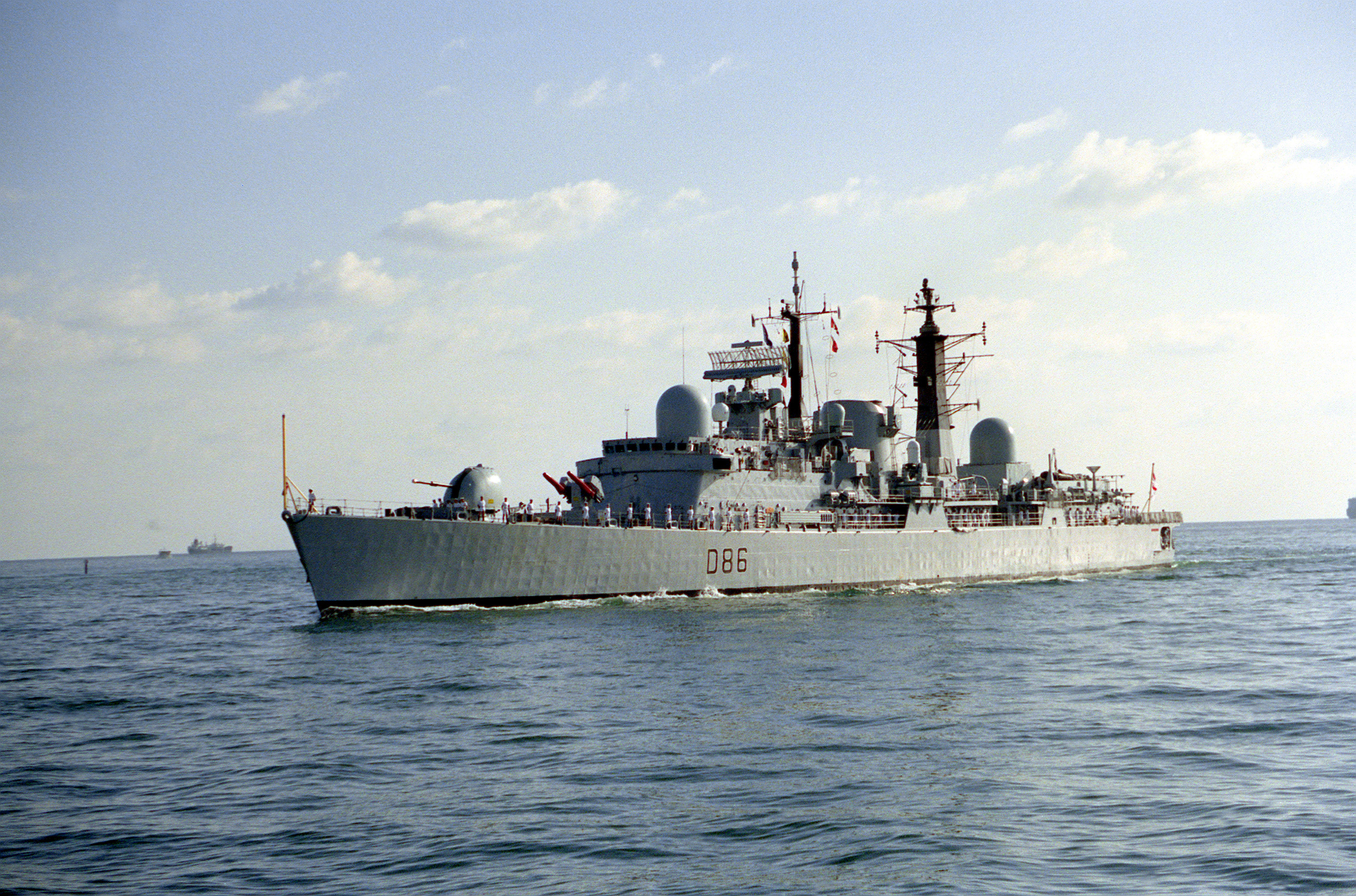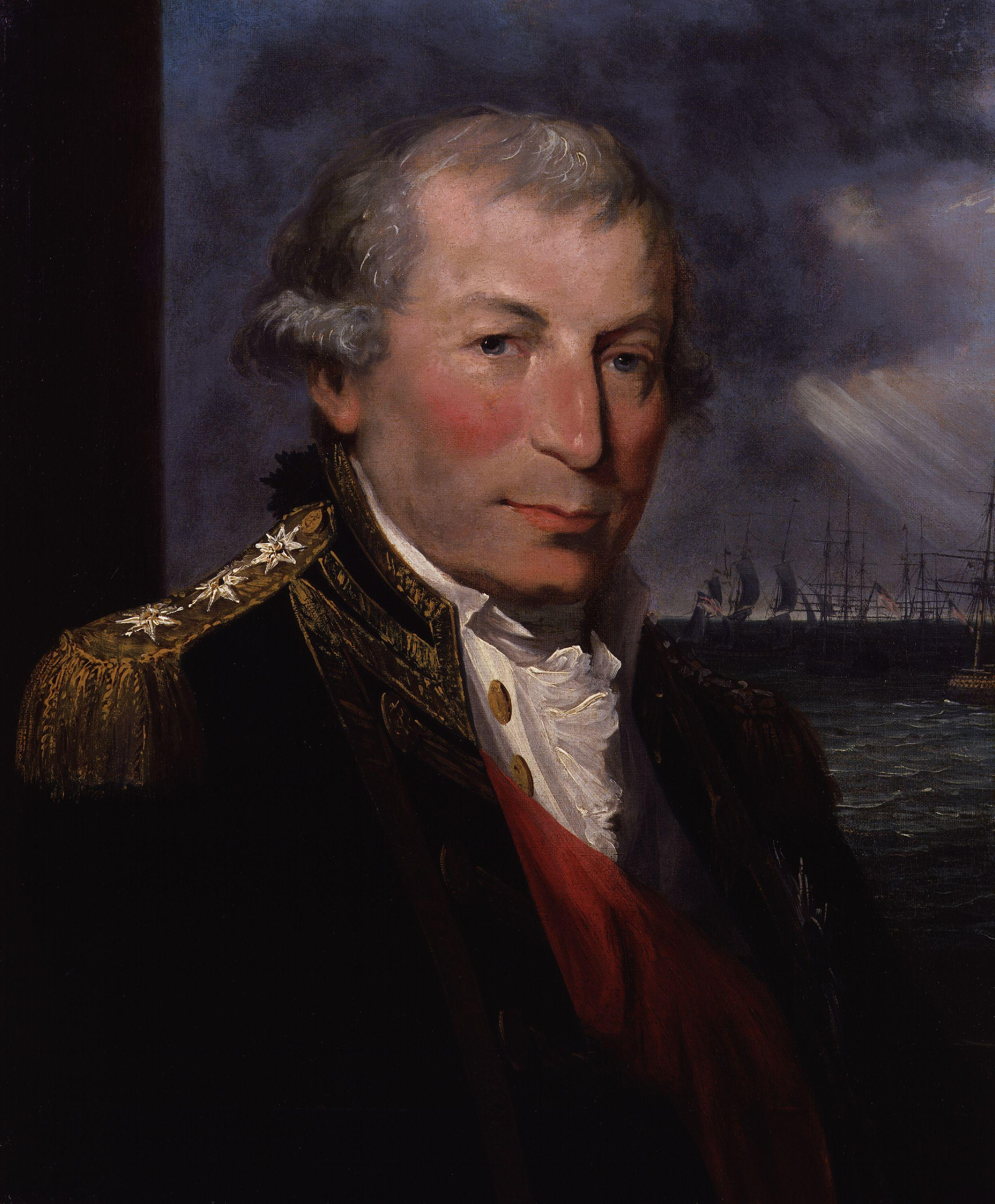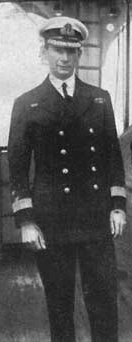|
HMS Southampton
Six Royal Navy ships have borne the name HMS ''Southampton''. All were named after Southampton, a port on the south coast of England. * was a 48-gun fourth rate launched in 1693. The ship was rebuilt in 1700, hulked at Jamaica in 1728 and finally broken up in 1771. * was a 32-gun fifth rate launched in 1757, and wrecked in 1812. * was a 60-gun fourth rate launched in 1820. In 1867 the ship was lent to the Hull Committee, finally being sold in 1912. * was a cruiser, launched in 1912 and sold in 1926. She fought at the Battle of Jutland. * was a cruiser, launched in 1936 and sunk off Malta on 11 January 1941. * was a Type 42 destroyer, launched in 1979 and decommissioned in 2009. Honours *''Emeraude'' 1757 *Belle Isle 1761 *The Glorious First of June 1794 * St Vincent 1797 *Heligoland 1914 *Dogger Bank 1915 *Jutland 1916 *Norway 1940 * Spartivento 1940 *Malta Convoys The Malta convoys were Allied supply convoys of the Second World War. The convoys took place during the S ... [...More Info...] [...Related Items...] OR: [Wikipedia] [Google] [Baidu] |
Type 42 Destroyer
The Type 42 or ''Sheffield'' class, was a class of fourteen guided-missile destroyers that served in the Royal Navy.Marriott, Leo: ''Royal Navy Destroyers since 1945'', , Ian Allan Ltd, 1989 A further two ships of this class were built for and served with the Argentine Navy. The first ship of the class was ordered in 1968 and launched in 1971. Two of the class (''Sheffield'' and ''Coventry'') were sunk in action during the Falklands War of 1982. The Royal Navy used this class of destroyer for 38 years between 1975 and 2013. No ships of this class remain active in the Royal Navy and one remains in the Argentine Navy. The Royal Navy has replaced them with Type 45 destroyers. History The class was designed in the late 1960s to provide fleet area air defence. In total fourteen vessels were constructed in three batches. In addition to the Royal Navy ships, two more ships were built to the same specifications as the Batch 1 vessels for the Argentine Navy. ''Hércules'' was built i ... [...More Info...] [...Related Items...] OR: [Wikipedia] [Google] [Baidu] |
Royal Navy
The Royal Navy (RN) is the United Kingdom's naval warfare force. Although warships were used by English and Scottish kings from the early medieval period, the first major maritime engagements were fought in the Hundred Years' War against France. The modern Royal Navy traces its origins to the early 16th century; the oldest of the UK's armed services, it is consequently known as the Senior Service. From the middle decades of the 17th century, and through the 18th century, the Royal Navy vied with the Dutch Navy and later with the French Navy for maritime supremacy. From the mid 18th century, it was the world's most powerful navy until the Second World War. The Royal Navy played a key part in establishing and defending the British Empire, and four Imperial fortress colonies and a string of imperial bases and coaling stations secured the Royal Navy's ability to assert naval superiority globally. Owing to this historical prominence, it is common, even among non-Britons, to ref ... [...More Info...] [...Related Items...] OR: [Wikipedia] [Google] [Baidu] |
Southampton
Southampton () is a port city in the ceremonial county of Hampshire in southern England. It is located approximately south-west of London and west of Portsmouth. The city forms part of the South Hampshire built-up area, which also covers Portsmouth and the towns of Havant, Waterlooville, Eastleigh, Fareham and Gosport. A major port, and close to the New Forest, it lies at the northernmost point of Southampton Water, at the confluence of the River Test and Itchen, with the River Hamble joining to the south. Southampton is classified as a Medium-Port City . Southampton was the departure point for the and home to 500 of the people who perished on board. The Spitfire was built in the city and Southampton has a strong association with the ''Mayflower'', being the departure point before the vessel was forced to return to Plymouth. In the past century, the city was one of Europe's main ports for ocean liners and more recently, Southampton is known as the home port of some of ... [...More Info...] [...Related Items...] OR: [Wikipedia] [Google] [Baidu] |
England
England is a country that is part of the United Kingdom. It shares land borders with Wales to its west and Scotland to its north. The Irish Sea lies northwest and the Celtic Sea to the southwest. It is separated from continental Europe by the North Sea to the east and the English Channel to the south. The country covers five-eighths of the island of Great Britain, which lies in the North Atlantic, and includes over 100 smaller islands, such as the Isles of Scilly and the Isle of Wight. The area now called England was first inhabited by modern humans during the Upper Paleolithic period, but takes its name from the Angles, a Germanic tribe deriving its name from the Anglia peninsula, who settled during the 5th and 6th centuries. England became a unified state in the 10th century and has had a significant cultural and legal impact on the wider world since the Age of Discovery, which began during the 15th century. The English language, the Anglican Church, and Engli ... [...More Info...] [...Related Items...] OR: [Wikipedia] [Google] [Baidu] |
Fourth Rate
In 1603 all English warships with a compliment of fewer than 160 men were known as 'small ships'. In 1625/26 to establish pay rates for officers a six tier naval ship rating system was introduced.Winfield 2009 These small ships were divided into three tiers, Fourth, Fifth and Sixth rates. Up to the end of the 17th century the number of guns and the compliment size was adjusted until the rating system was actually clarified. A 'Fourth Rate' was nominally a ship of over thirty guns with a complement of 140 men. In the rating system of the Royal Navy used to categorize sailing warships in the 18th century, a fourth-rate was a ship of the line with 46 to 60 guns mounted. They were phased out of ship of the line service during the French Revolutionary and Napoleonic Wars, as their usefulness was declining; though they were still in service, especially on distant stations such as the East Indies. ''Fourth-rates'' took many forms, initially as small two decked warships, later as larg ... [...More Info...] [...Related Items...] OR: [Wikipedia] [Google] [Baidu] |
Fifth Rate
In the rating system of the Royal Navy used to categorise sailing warships, a fifth rate was the second-smallest class of warships in a hierarchical system of six " ratings" based on size and firepower. Rating The rating system in the Royal Navy as originally devised had just four rates, but early in the reign of Charles I, the original fourth rate (derived from the "Small Ships" category under his father, James I) was divided into new classifications of fourth, fifth, and sixth rates. While a fourth-rate ship was defined as a ship of the line, fifth and the smaller sixth-rate ships were never included among ships-of-the-line. Nevertheless, during the Anglo-Dutch Wars of the 17th century, fifth rates often found themselves involved among the battle fleet in major actions. Structurally, these were two-deckers, with a complete battery on the lower deck, and fewer guns on the upper deck (below the forecastle and quarter decks, usually with no guns in the waist on this deck). The ... [...More Info...] [...Related Items...] OR: [Wikipedia] [Google] [Baidu] |
Cruiser
A cruiser is a type of warship. Modern cruisers are generally the largest ships in a fleet after aircraft carriers and amphibious assault ships, and can usually perform several roles. The term "cruiser", which has been in use for several hundred years, has changed its meaning over time. During the Age of Sail, the term ''cruising'' referred to certain kinds of missions—independent scouting, commerce protection, or raiding—fulfilled by frigates or sloops-of-war, which functioned as the ''cruising warships'' of a fleet. In the middle of the 19th century, ''cruiser'' came to be a classification of the ships intended for cruising distant waters, for commerce raiding, and for scouting for the battle fleet. Cruisers came in a wide variety of sizes, from the medium-sized protected cruiser to large armored cruisers that were nearly as big (although not as powerful or as well-armored) as a pre-dreadnought battleship. With the advent of the dreadnought battleship before World W ... [...More Info...] [...Related Items...] OR: [Wikipedia] [Google] [Baidu] |
Battle Of Jutland
The Battle of Jutland (german: Skagerrakschlacht, the Battle of the Skagerrak) was a naval battle fought between Britain's Royal Navy Grand Fleet, under Admiral John Jellicoe, 1st Earl Jellicoe, Sir John Jellicoe, and the Imperial German Navy's High Seas Fleet, under Vice-Admiral Reinhard Scheer, during the First World War. The battle unfolded in extensive manoeuvring and three main engagements (the battlecruiser action, the fleet action and the night action), from 31 May to 1 June 1916, off the North Sea coast of Denmark's Jutland Peninsula. It was the largest naval battle and the only full-scale clash of battleships in that war. Jutland was the third fleet action between steel battleships, following the Battle of the Yellow Sea in 1904 and the Battle of Tsushima in 1905, during the Russo-Japanese War. Jutland was the last major battle in history fought primarily by battleships. Germany's High Seas Fleet intended to lure out, trap, and destroy a portion of the British Grand ... [...More Info...] [...Related Items...] OR: [Wikipedia] [Google] [Baidu] |
Glorious First Of June
The Glorious First of June (1 June 1794), also known as the Fourth Battle of Ushant, (known in France as the or ) was the first and largest fleet action of the naval conflict between the Kingdom of Great Britain and the First French Republic during the French Revolutionary Wars. The action was the culmination of a campaign that had criss-crossed the Bay of Biscay over the previous month in which both sides had captured numerous merchant ships and minor warships and had engaged in two partial, but inconclusive, fleet actions. The British Channel Fleet under Admiral Lord Howe attempted to prevent the passage of a vital French grain convoy from the United States, which was protected by the French Atlantic Fleet, commanded by Rear-Admiral Villaret-Joyeuse. The two forces clashed in the Atlantic Ocean, some west of the French island of Ushant on 1 June 1794. During the battle, Howe defied naval convention by ordering his fleet to turn towards the French and for each of his ves ... [...More Info...] [...Related Items...] OR: [Wikipedia] [Google] [Baidu] |
Battle Of Cape St Vincent (1797)
The Battle of Cape St. Vincent (14 February 1797) was one of the opening battles of the Anglo-Spanish War (1796–1808), as part of the French Revolutionary Wars, where a British fleet under Admiral Sir John Jervis defeated a greatly superior Spanish fleet under Admiral Don José de Córdoba y Ramos near Cape St. Vincent, Portugal. Background After the signing of the Treaty of San Ildefonso in 1796 allying Spanish and French forces against Great Britain, the British navy blockaded Spain in 1797, impairing communications with its Spanish Empire. The Spanish declaration of war on Britain and Portugal in October 1796 made the British position in the Mediterranean untenable. The combined Franco-Spanish fleet of 38 ships of the line heavily outnumbered the British Mediterranean Fleet of fifteen ships of the line, forcing the British to evacuate their positions in first Corsica and then Elba. Early in 1797, the Spanish fleet of 27 ships of the line, which were supposed to join th ... [...More Info...] [...Related Items...] OR: [Wikipedia] [Google] [Baidu] |
Battle Of Heligoland Bight (1914)
The Battle of Heligoland Bight was the first Anglo-German naval battle of the First World War, fought on 28 August 1914, between ships of the United Kingdom and Germany. The battle took place in the south-eastern North Sea, when the British attacked German patrols off the north-west German coast. The German High Seas Fleet was in harbour on the north German coast while the British Grand Fleet was out in the northern North Sea. Both sides engaged in long-distance sorties with cruisers and battlecruisers, with close reconnaissance of the area of sea near the German coast—the Heligoland Bight—by destroyer. The British devised a plan to ambush German destroyers on their daily patrols. A British flotilla of 31 destroyers and two cruisers under Commodore Reginald Tyrwhitt, with submarines commanded by Commodore Roger Keyes, was dispatched. They were supported at longer range by an additional six light cruisers commanded by William Goodenough and five battlecruisers commanded b ... [...More Info...] [...Related Items...] OR: [Wikipedia] [Google] [Baidu] |
Battle Of Dogger Bank (1915)
The Battle of Dogger Bank was a naval engagement during the First World War that took place on 24 January 1915 near the Dogger Bank in the North Sea, between squadrons of the British Grand Fleet and the (High Seas Fleet). The British had intercepted and decoded German wireless transmissions, gaining advance knowledge that a German raiding squadron was heading for Dogger Bank and ships of the Grand Fleet sailed to intercept the raiders. The British surprised the smaller and slower German squadron, which fled for home. During a stern chase lasting several hours, the British caught up with the Germans and engaged them with long-range gunfire. The British disabled , the rearmost German ship, and the Germans put the British flagship out of action. Due to inadequate signalling, the remaining British ships stopped the pursuit to sink ''Blücher''; by the time the ship had been sunk, the rest of the German squadron had escaped. The German squadron returned to harbour, with some ship ... [...More Info...] [...Related Items...] OR: [Wikipedia] [Google] [Baidu] |


_-_02.jpg)
.jpg)





